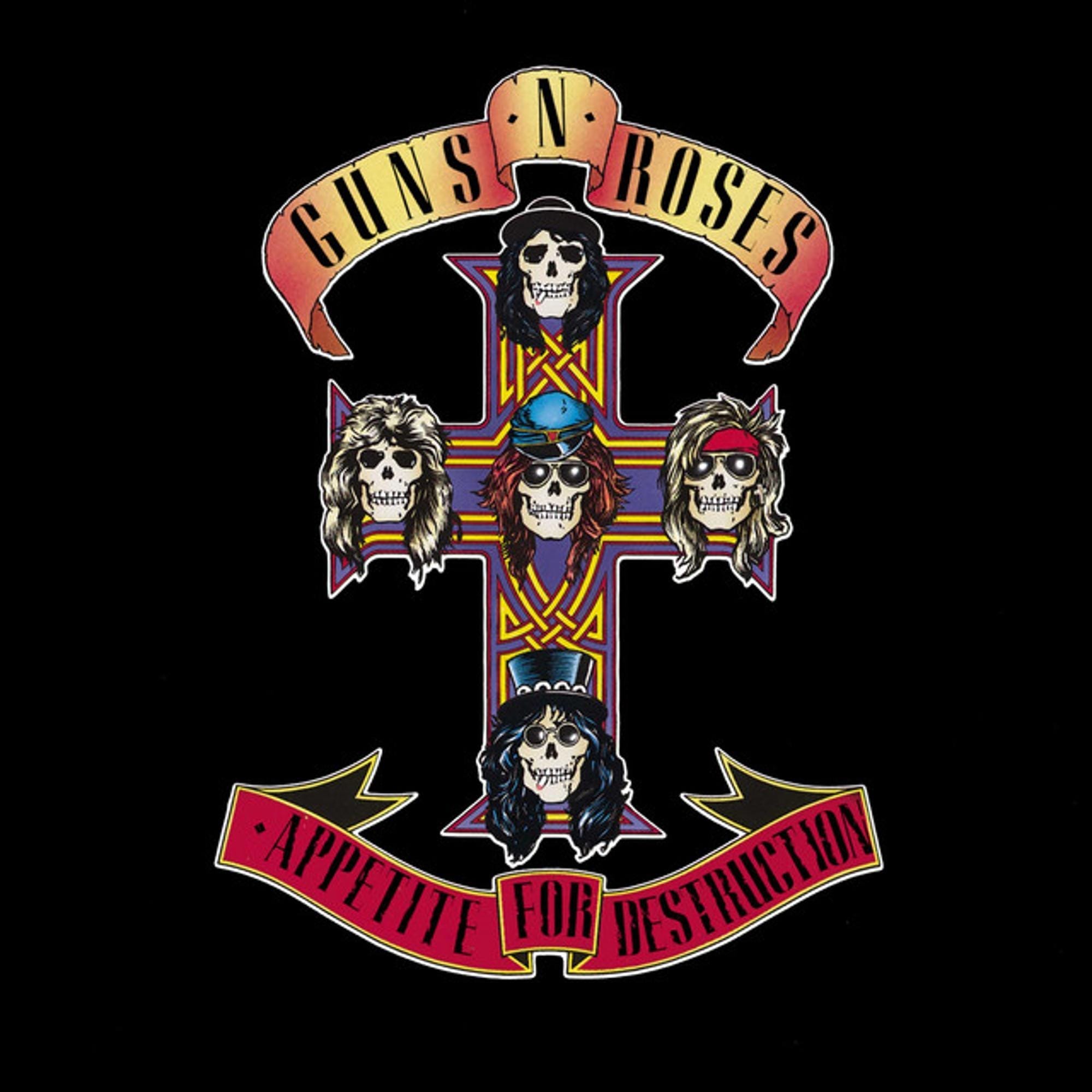
Introduction
Some albums change everything. Appetite For Destruction by Guns N’ Roses didn’t just shake up the late eighties; it detonated the entire hard rock scene. Released in 1987, it roared out of Los Angeles with a dangerous swagger, raw honesty, and an energy that left other bands in its wake. From the first snarling riff of “Welcome To The Jungle” to the wild closing notes of “Rocket Queen”, Appetite For Destruction sounded like nothing else at the time. Its impact still echoes today.
In this article, I’ll take you deep into the making of Appetite For Destruction. You’ll discover how Guns N’ Roses clawed their way up from the gutters of LA, the recording process behind their legendary sound, the album’s commercial explosion, and why its songs still matter. I’ll also break down every track, explore the lyrics, reveal stories from the road, and show how this record shaped music history. Whether you’re a lifelong fan or discovering the album for the first time, you’ll find every detail you need right here.
| Attribute | Details |
|---|---|
| Album Title | Appetite For Destruction |
| Release Date | 21 July 1987 |
| Genre | Hard rock, heavy metal, hair metal, pop metal |
| Total Runtime | 53:52 |
| Number of Tracks | 12 |
| Record Label | Geffen Records |
| Recording Studios | Rumbo Studios (Canoga Park), Take One (Burbank), Record Plant (Los Angeles), Can Am (Los Angeles) |
| Producer(s) | Mike Clink |
Appetite For Destruction is the best-selling debut album in US history, with over 18 million copies sold in America and around 30 million worldwide. It took more than a year to reach number one on the Billboard 200, but once it did, it stayed on the charts for 147 weeks. Its raw sound and honest lyrics gave hard rock a much-needed jolt. “It was dangerous, real, and uncompromising,” said Kerrang! magazine, calling it a return to “real raunch rebels.” Slash later reflected, “We were just being ourselves, but the world hadn’t seen anything like us in a long time.”
Axl Rose put it simply: “This record was about our lives, no bullshit. If people couldn’t handle it, tough.” Appetite For Destruction continues to inspire musicians, fans, and even critics who once dismissed it. If you want to hear more, we discussed the album’s creation, impact, and legacy in our podcast episode:
The Genesis of “Appetite For Destruction”
Before Appetite For Destruction, the Los Angeles music scene was changing. Glam metal bands like Mötley Crüe and Poison were filling clubs, but something rawer was brewing. Guns N’ Roses formed in 1985, a collision of Hollywood Rose and L.A. Guns. Axl Rose, Slash, Izzy Stradlin, Duff McKagan, and Steven Adler soon became infamous for their chaotic shows and wild lives. Their early days were marked by poverty, fights, and an obsession with making honest, unfiltered music.
By 1986, the band had signed with Geffen Records. The label’s $75,000 advance was a risk, but Geffen’s Al Coury believed in their potential. Guns N’ Roses released the Live ?!*@ Like a Suicide EP to keep momentum while they prepared their debut. Many of the songs on Appetite were written during these club gigs, shaped by the band’s real experiences with addiction, violence, and life on the edge. Tracks like “Mr. Brownstone” and “Out Ta Get Me” were drawn straight from the band’s struggles.
The creative force behind Appetite For Destruction was the classic lineup. Axl Rose wrote lyrics that captured his anger and vulnerability. Slash’s guitar work, often played on a now-legendary Les Paul replica, gave the album its searing edge. Izzy Stradlin contributed riffs and arrangements, while Duff McKagan’s punk-influenced bass lines drove the songs forward. Steven Adler’s drumming added a swing that set them apart from other bands of the time. There were no guest artists, but the chemistry between these five musicians was electric.
Here’s a breakdown of the band members and their roles:
| Member | Instrument/Role |
|---|---|
| Axl Rose | Lead vocals, synthesizer on “Paradise City”, percussion |
| Slash | Lead guitar, acoustic guitar, slide guitar, talk box, backing vocals |
| Izzy Stradlin | Rhythm guitar, lead guitar, backing vocals, percussion |
| Duff McKagan | Bass guitar, backing vocals |
| Steven Adler | Drums |
The album’s $370,000 budget was funded by Geffen, but money was always tight. Much of the advance was spent on gear, rent, and, as Slash admitted, “heroin and cheap wine.” The band faced financial and personal challenges, nearly being dropped by the label more than once. Yet, their hunger and drive only sharpened their music.
The album’s title came from a painting by Robert Williams. The original cover art, showing a violent scene, was quickly replaced due to backlash from retailers. Billy White Jr. designed the now-famous cross and skulls, each representing a band member. The band wanted something that felt dangerous but also captured their unity. The artwork, like the music, was unflinching and iconic.
Recording Process
Recording Appetite For Destruction was as intense as the music itself. Sessions began in January 1987 and ran until June that year. The band worked at several Los Angeles studios: Rumbo Recorders, Take One, Record Plant, and Can Am. Each studio offered different equipment and vibes, but all sessions were driven by producer Mike Clink. Clink was chosen for his reputation as a detail-oriented, no-nonsense producer. He had previously worked with Triumph and Jefferson Starship, but Appetite would become his most famous project.
Mike Clink’s role was crucial. He kept the band focused and coaxed the best performances from each member. Drums were recorded in just six days, but Axl Rose’s perfectionism meant vocals took much longer. Clink’s engineering team included Steve Thompson and Michael Barbiero for mixing, with George Marino mastering the LP and cassette versions. Assistant engineer Vic Mix helped recall technical details, ensuring the sessions ran smoothly.
The studios used some of the era’s best hardware. Based on available information and the technology of the time, here’s a summary of the likely equipment and techniques:
| Equipment/Technique | Details |
|---|---|
| Mixing Console | Neve 8068 (3-band and 4-band EQ) |
| Tape Machines | Studer A800 (multi-track), Studer A80 (mixdown), Ampex 456 1″ tape at 30ips |
| EQ | Pultec EQP (top/bottom), Pultec MEQ (midrange) |
| Effects | AMS delay (125ms), Lexicon and EMT plate reverbs, MXR Flanger/Phaser, Roland SRV-2000 |
| Compressors | Urei LA2A (vocals, bass), LA3A (guitars) |
| Microphones | Neumann U87 (Axl Rose vocals), others likely used for drums and amps |
| Guitars | Slash: Kris Derrig Les Paul replica (with Seymour Duncan Alnico II pickups), 1961 Gibson SG (for “My Michelle”), Izzy Stradlin: Gibson ES-175D, Les Paul Black Beauty |
| Amplifiers | Marshall Super Lead (modded), Marshall 4×12 cab (Celestion 30s), Mesa Boogie (Izzy) |
| Other Techniques | AMS delay for snare on “Welcome To The Jungle”, sampled snare synced with console, MXR effects on vocals and cymbals |
Recording was rarely straightforward. Slash’s main Les Paul was a replica, built by luthier Kris Derrig, because he couldn’t afford a real one. The Marshall amp he used was a rental, and he tried to buy it by claiming it was stolen. Izzy’s rhythm parts were tracked with a Gibson ES-175 and a Mesa Boogie amp, giving the album a unique stereo spread. Duff’s bass ran through a Urei LA2A compressor for punch. Axl’s vocals were often double-tracked, and Clink used AMS and Lexicon effects for depth.
Appetite’s producer, Mike Clink, went on to work with other artists. Here’s a table of albums he produced, excluding Appetite For Destruction:
| Producer | Artist | Album | Year |
|---|---|---|---|
| Mike Clink | Jefferson Starship | Nuclear Furniture | 1984 |
| Mike Clink | Triumph | Sport of Kings | 1986 |
| Mike Clink | Megadeth | Countdown to Extinction | 1992 |
| Mike Clink | Megadeth | Youthanasia | 1994 |
For more on Megadeth’s work with Mike Clink, see our articles Exploring Countdown to Extinction: Megadeth’s Defining Album and Youthanasia: Megadeth’s Pivotal Heavy Metal Shift.
Commercial Performance and Reception
Appetite For Destruction didn’t explode overnight. It entered the Billboard 200 at number 182 in August 1987, selling around 200,000 copies in its first months. Radio and MTV were slow to support “Welcome To The Jungle”, but after Geffen’s Al Coury convinced MTV to air the video, the song became the network’s most requested. Singles like “Sweet Child O’ Mine” and “Paradise City” then followed, each climbing the charts and pushing album sales higher. By August 1988, Appetite hit number one in the US, over a year after release, and stayed on the chart for nearly three years.
Here’s a table of Guns N’ Roses’ studio albums, their release years, and sales data where available:
| Album | Year | Sales Data |
|---|---|---|
| Appetite For Destruction | 1987 | 18 million (US), 30 million (worldwide) |
| G N’ R Lies | 1988 | 9–10 million (worldwide) |
| Use Your Illusion I | 1991 | 16–18 million (worldwide) |
| Use Your Illusion II | 1991 | 17–18.6 million (worldwide) |
| The Spaghetti Incident? | 1993 | 5–5.7 million (worldwide) |
| Chinese Democracy | 2008 | 3–4 million (worldwide) |
Appetite For Destruction is certified 18× platinum in the US, diamond in Canada, 4× platinum in the UK, and multi-platinum across Europe, Australia, and South America. It’s the best-selling debut album in US history and among the top-selling albums worldwide. It won the 1990 American Music Award for Favourite Heavy Metal/Hard Rock Album and Favourite Heavy Metal/Hard Rock Artist, and MTV awarded Best New Artist in a Video for “Welcome To The Jungle” in 1988. Rolling Stone, Q, Kerrang!, VH1, and Pitchfork have all ranked Appetite among the greatest albums ever made.
Other key albums released in 1987 by similar artists included:
- Hysteria by Def Leppard [physical sales: over 20 million]
- Permanent Vacation by Aerosmith
- Girls, Girls, Girls by Mötley Crüe
- Among the Living by Anthrax
- Whitesnake by Whitesnake
- Introduce Yourself by Faith No More
- Once Bitten by Great White
- Faster Pussycat by Faster Pussycat
Appetite For Destruction received a long list of awards and recognitions. Rolling Stone ranked it 62nd in their “500 Greatest Albums of All Time” (2012, 2020), and 27th best album of the 1980s. Q magazine put it in their “50 Heaviest Albums of All Time” and named it one of the best metal albums ever. Kerrang! ranked it as the most essential hard rock album, and VH1 placed it 42nd in their “Greatest Albums of All Time.” The album is included in “1001 Albums You Must Hear Before You Die.” Appetite’s legacy is secure—few albums have received such sustained acclaim.
Elsewhere in 1987, heavy music was evolving. MTV’s Headbangers Ball debuted, giving metal and hard rock bands new exposure. Bands like Faith No More, Faster Pussycat, and Def Leppard released albums that defined the era. Aerosmith made a comeback with Permanent Vacation, while Queensrÿche and others were pushing the boundaries of the genre. Appetite For Destruction stood out for its honesty and intensity, but it was part of a larger movement that changed the face of rock.
Track Analysis
Appetite For Destruction spawned five singles: “It’s So Easy”, “Welcome To The Jungle”, “Sweet Child O’ Mine”, “Paradise City”, and “Nightrain”. Each single had a distinct release date and chart story. “Welcome To The Jungle” was released in September 1987 and reached number 7 on the Billboard Hot 100. “Sweet Child O’ Mine”, released in June 1988, became the band’s only US number one single. “Paradise City” followed in January 1989, peaking at number 5. “Nightrain” was released as a single in July 1989. “It’s So Easy” was released first in June 1987, but only in the UK.
Here’s a table of every song from Appetite For Destruction, with length and writing credits. Singles are marked with a *.
| Track Name | Length (seconds) | Writing Credit |
|---|---|---|
| Welcome To The Jungle* | 80 | Guns N’ Roses |
| It’s So Easy* | 60 | Guns N’ Roses, West Arkeen |
| Nightrain* | 63 | Guns N’ Roses |
| Out Ta Get Me | 53 | Guns N’ Roses |
| Mr. Brownstone | 61 | Guns N’ Roses |
| Paradise City* | 78 | Guns N’ Roses |
| My Michelle | 57 | Guns N’ Roses |
| Think About You | 52 | Guns N’ Roses |
| Sweet Child O’ Mine* | 84 | Guns N’ Roses |
| You’re Crazy | 50 | Guns N’ Roses |
| Anything Goes | 50 | Guns N’ Roses, Chris Weber |
| Rocket Queen | 59 | Guns N’ Roses |
Note: Tracks marked with * were released as singles. Chart positions: “Welcome To The Jungle” (US #7), “Sweet Child O’ Mine” (US #1), “Paradise City” (US #5). “Nightrain” and “It’s So Easy” were singles but did not chart as high in the US.
Song Meaning and Lyrics
Appetite For Destruction’s lyrics are honest, sometimes brutal, and always rooted in real experience. The singles, in particular, capture the band’s struggles and dreams. “It’s So Easy” reflects the hedonistic LA lifestyle, with lines like “It’s so easy to be hungry when you ain’t got shit to lose.” The song was co-written by Duff McKagan and West Arkeen, drawing on the band’s early days of poverty and excess. The lyrics show how success and destruction often go hand in hand (source).
“Welcome To The Jungle” is a warning and an invitation. Inspired by Axl Rose’s first trip to New York, it’s a portrait of urban chaos and temptation. The “jungle” stands for the lawlessness and danger of city life, but also the thrill of survival. Lyrics like “You’re in the jungle, baby, you’re gonna die!” were taken from a real-life encounter. The song also references sex, drugs, and the predatory nature of fame (source).
“Sweet Child O’ Mine” is a rare moment of tenderness. Axl Rose wrote the lyrics for then-girlfriend Erin Everly, using Homeric similes and childhood imagery. The line “Her hair reminds me of a warm safe place where as a child I’d lie” is both poetic and personal. The song’s innocence stands in contrast to the rest of the album’s grit (source).
“Paradise City” is about longing for escape. The chorus—“Take me down to the paradise city where the grass is green and the girls are pretty”—captures a yearning for something better. Axl Rose said it was inspired by memories of the Midwest, but the verses describe the band’s real struggles in LA. The song balances nostalgia and harsh reality (source).
“Nightrain” is a tribute to Night Train Express, the cheap wine that fuelled the band’s early days. Lyrics like “Loaded like a freight train, flyin’ like an aeroplane” celebrate the reckless abandon of their lifestyle. The song’s energy matches its subject—fast, loud, and unstoppable (source).
Touring and Promotion of Appetite For Destruction
Promotion for Appetite For Destruction was relentless. Geffen Records pushed hard to get MTV and radio airplay, but the band’s real weapon was their live show. Music videos for “Welcome To The Jungle”, “Sweet Child O’ Mine”, and “Paradise City” became staples on MTV. The band’s image—dangerous, unpredictable, and authentic—was at the centre of every campaign.
The Appetite For Destruction tour began in March 1987 at Whisky A Go Go in Los Angeles and ran until December 1987. The band played over 100 shows that year, crisscrossing the US, Canada, and Europe. Notable performances included three sold-out nights at London’s Marquee Club and a headline show at the Hammersmith Odeon. The tour saw Guns N’ Roses opening for The Cult, Mötley Crüe, Alice Cooper, Iron Maiden, and Aerosmith. Each night was unpredictable—fights, arrests, and wild after-parties were common. The classic lineup played together throughout, except for a handful of shows where drummer Steven Adler was temporarily replaced due to injury (source).
Guns N’ Roses toured with The Cult, Mötley Crüe, Alice Cooper, Iron Maiden, and Aerosmith during 1987 and 1988. They played major venues across North America and Europe, building a reputation as the most dangerous band on the planet. Incidents on the road included brawls with security, run-ins with police, and chaotic scenes at after-show parties. Despite—or because of—this, their fanbase grew with every gig.
Influences and Legacy
Appetite For Destruction was shaped by a mix of punk, blues, hard rock, and glam metal. The band cited influences such as Aerosmith, Queen, AC/DC, The Rolling Stones, Led Zeppelin, Rose Tattoo, and Hanoi Rocks. Their sound combined the raw energy of punk with the swagger of classic rock and the aggression of metal.
Here’s a table of influences and the artists later influenced by Appetite For Destruction:
| Influences on Appetite For Destruction | Artists Influenced by Appetite For Destruction |
|---|---|
| Aerosmith | Avenged Sevenfold |
| Queen | The Strokes |
| AC/DC | Buckcherry |
| The Rolling Stones | Mother Love Bone |
| Led Zeppelin | Nickelback |
| Rose Tattoo | Fozzy |
| Hanoi Rocks | Sum 41 |
| Sex Pistols | Manic Street Preachers |
| Cheap Trick | Black Label Society |
Released in 1987, Appetite For Destruction arrived during a year of upheaval. Globally, 1987 saw the Black Monday stock market crash, Reagan and Gorbachev signing a nuclear arms treaty, and the world’s population reaching five billion. In music, Aretha Franklin became the first woman inducted into the Rock and Roll Hall of Fame, and U2 released The Joshua Tree. MTV’s influence grew, and new genres like acid house and alternative rock were emerging. Appetite’s blend of old-school rock and modern aggression made it the right album at the right time.
Five Things About Appetite For Destruction
Here are five verified facts about Appetite For Destruction:
| Fact | Details |
|---|---|
| Best-selling debut album in US history | Certified 18× platinum by the RIAA, over 18 million copies sold in the US alone. |
| Original cover art banned | Robert Williams’ painting was replaced after retailers refused to stock it. |
| “Sweet Child O’ Mine” was a last-minute addition | The song was written as a joke during rehearsal, but became the band’s only US number one single. |
| The band lived in poverty during recording | Most of their advance was spent on rent, drugs, and gear. They often slept in their rehearsal space. |
| The album’s success was slow | It took over a year to reach number one, helped by MTV airplay and relentless touring. |
Media and Television Usage
Despite the album’s enduring popularity, I was unable to find any confirmed uses of Appetite For Destruction songs in major film, TV, or advertising campaigns, based on available data. The album’s music videos remain iconic, but the tracks themselves are rarely licensed for other media.
Critical Reviews and Retrospectives
On release, Appetite For Destruction received mixed reviews in the US, with some critics put off by its explicit themes. English magazines like Kerrang! were more enthusiastic, calling it a “return to real rock.” Over time, critical opinion shifted. AllMusic called it “the best metal record of the late ‘80s.” Pitchfork gave it a perfect 10/10, describing it as a “watershed moment in ‘80s rock.” Rolling Stone, Q, and VH1 all placed it high in their best-of lists. Retrospective reviews now see Appetite as a turning point for hard rock, blending metal, punk, glam, and blues in a way that set the template for decades.
After Appetite For Destruction
After Appetite, Guns N’ Roses became global superstars. The follow-up album, Use Your Illusion I & II, debuted at number one and two on the US charts and sold over 35 million copies worldwide. Lineup changes followed—Steven Adler was fired in 1990 due to addiction, replaced by Matt Sorum. Izzy Stradlin left in 1991, replaced by Gilby Clarke. The band’s output slowed, with The Spaghetti Incident? in 1993 and the long-delayed Chinese Democracy in 2008. Despite turmoil, Guns N’ Roses remain one of the world’s biggest bands, inducted into the Rock and Roll Hall of Fame in 2012. As of April 2025, Axl Rose, Slash, and Duff McKagan are still active, with Isaac Carpenter announced as the new drummer. The band continues to tour globally, releasing new singles like “Perhaps” in 2023 and planning a major tour for 2025.
Remasters and Reissues
No additional information about remasters or reissues is available from our sources at this time. Appetite For Destruction remains widely available in various formats, including deluxe editions and digital releases.
Conclusion
Appetite For Destruction endures because it’s honest, dangerous, and thrilling. It captured a moment in time when rock was at a crossroads and set a new standard for authenticity. Every song is rooted in real life—sometimes ugly, sometimes beautiful, always real. Thirty-seven years after its release, Appetite still sounds fresh, vital, and relevant. Guns N’ Roses continue to tour and record, and the appetite for their music remains undiminished. Whether you’re discovering the album or returning to it, Appetite For Destruction is a reminder that true rock and roll never dies.
Further Reading
For more on Guns N’ Roses and hard rock history, explore our own articles and podcasts:
- The Making of Use Your Illusion II – Guns N’ Roses’ Ambitious Classic (blog article)
- Faster Pussycat: The Glam Metal Revolution of 1987 (blog article)
- Def Leppard’s Pyromania: The Ultimate Rock Album (blog article)
- The Making of Permanent Vacation by Aerosmith (blog article)
- Exploring Countdown to Extinction: Megadeth’s Defining Album (blog article)
- Youthanasia: Megadeth’s Pivotal Heavy Metal Shift (blog article)
- Exploring Faith No More’s Angel Dust: A Sonic Revolution (blog article)
Other resources:
Let us know in the comments what your thoughts are on Appetite For Destruction by Guns N’ Roses. Did we miss anything? Share your experiences and join the conversation!
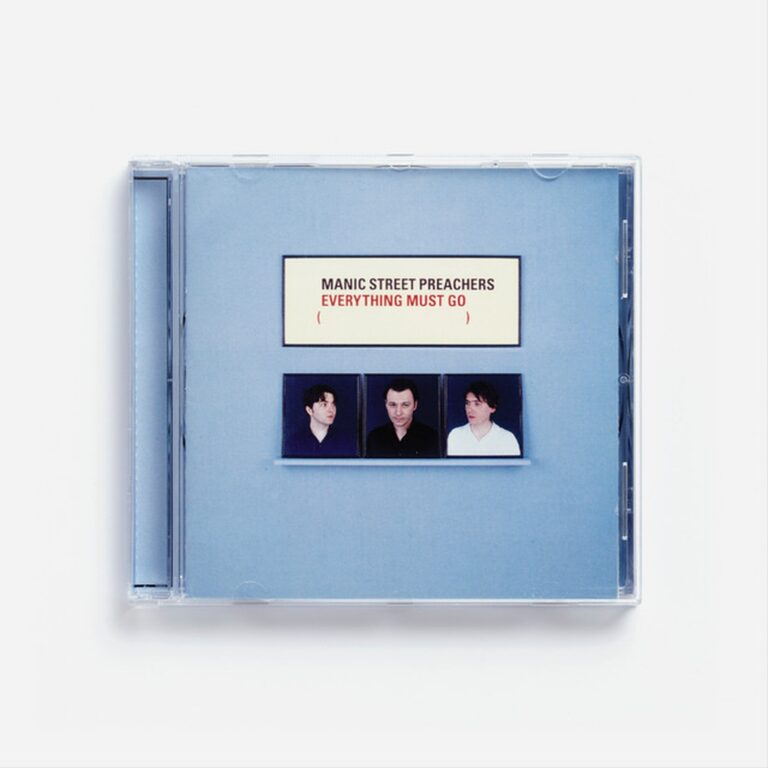
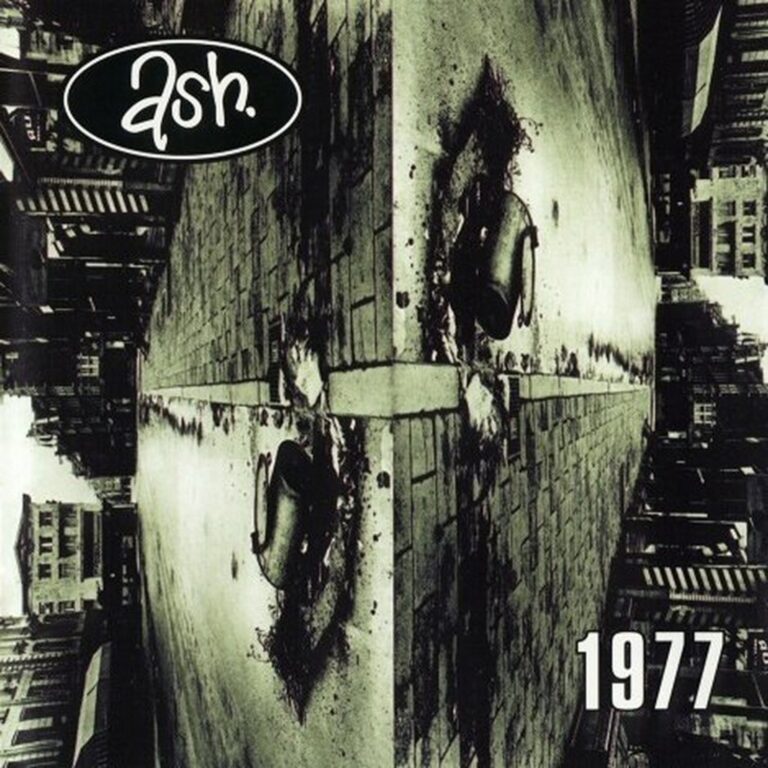
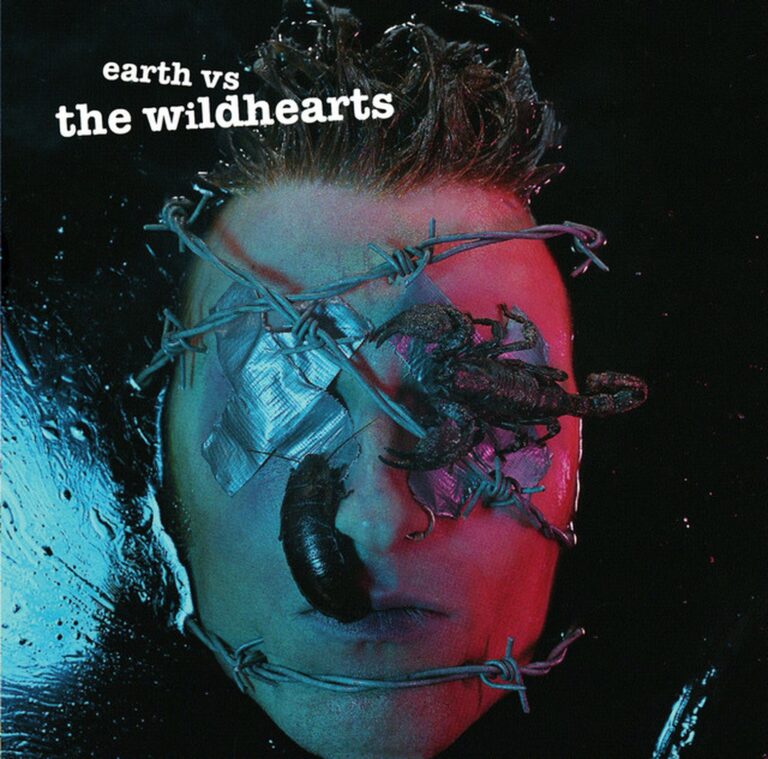
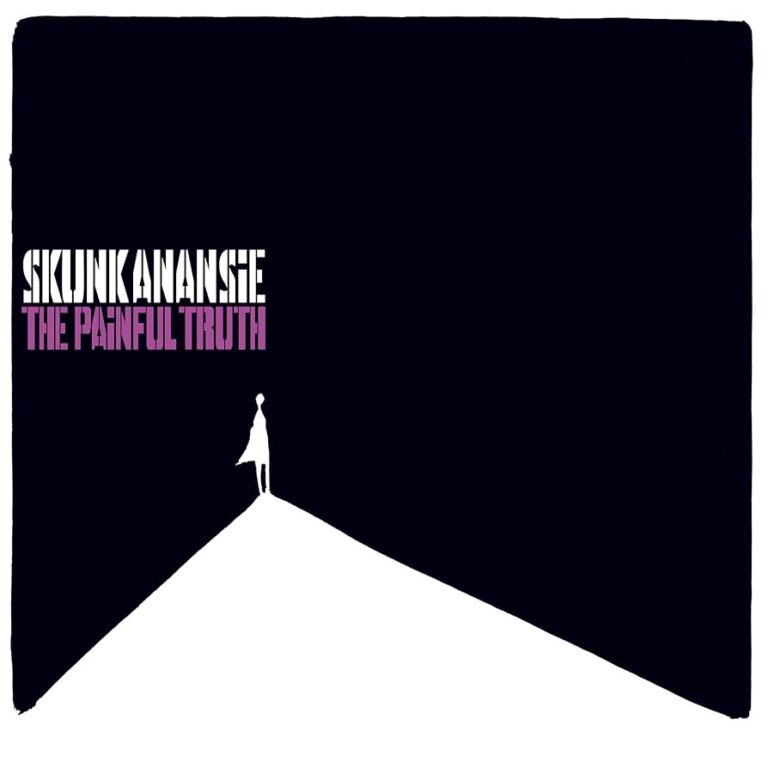
I was 10 years old when this came out. Felt like Slash’s guitar came out of the speakers, smacked me on the head and demanded to be listened to. Rock n’Roll was destined to be a lifelong passion from there on out.
HAs to be one of the best and most explosive debut records ever right?